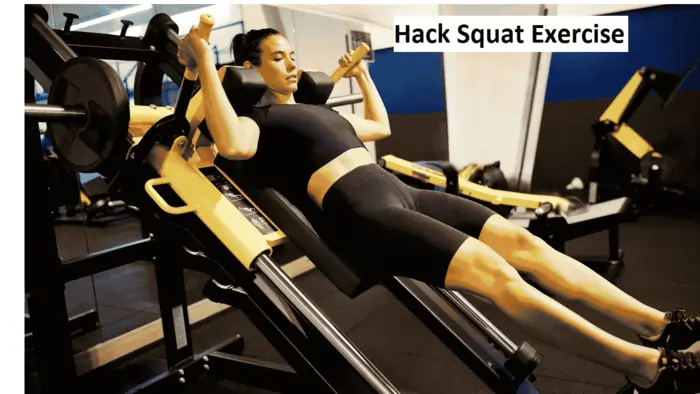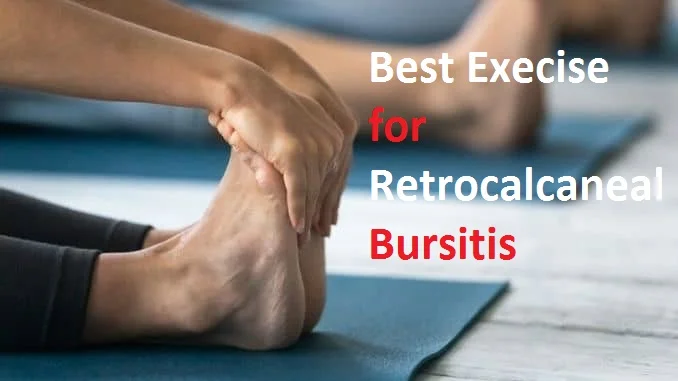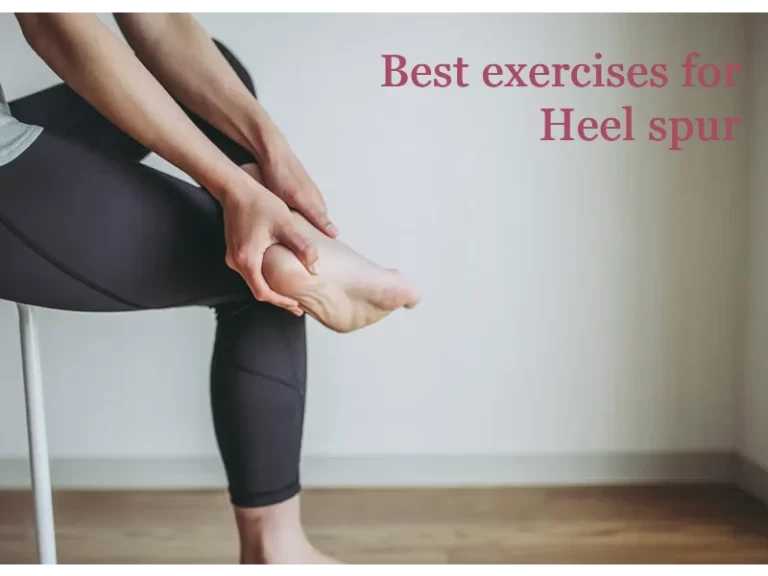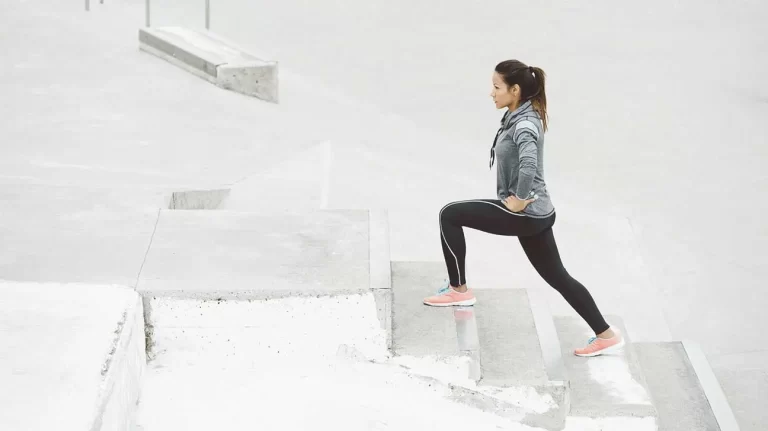Hack Squat Exercise
The hack squat is a compound exercise that mainly strengthens the quadriceps, hamstrings, and glutes.
It is a powerful compound exercise that works the lower back and core muscles as well. typically, an altered machine that simulates a squat’s motion while supporting the neck and back is used for doing the hack squat.
Table of Contents
Introduction
Through advanced levels and traditional squat modifications that target multiple muscles, you can achieve next-level gains in leg strength. To establish a balanced lower body for a comprehensive effective workout, learn hack squat variations which focus on every muscle in your legs, from the calves to the core.
The entirety of the lower body is strengthened with a hack squat, such as the quadriceps, ewes, hamstrings, thighs, and core. concentrating more on your quadriceps later will have effects on your front legs. A hack squat is a great approach to strengthening your legs if you’re new to the squat. Consider the hack squat into your training regimen if you want to increase the size of your legs, especially your quadriceps.
Hack squats use the same joint movement as a standard squat but emphasize primarily the hip joint. The hack squat requires a regular squat while standing on a fixed platform.
When compared to other workouts, hack squats concentrate the strain on the targeted muscles while applying stable equipment, which substantially decreases your need for stabilizing muscles and ensures everyone’s safety.
Muscles Activated in the Hack Squat:
When performing the hack squat, it’s necessary to employ the appropriate muscles. Radiating anxiety across your muscles will help you lift your weight and protect your joints. The hack squat strengthens your core in conjunction with your lower body.
Quads: The hack squat’s weight positioning will bring out your quadriceps and anterior chain more during this exercise. The transverse femoris, vastus lateralis, vastus medialis, and intermedius belong to the muscles that jointly make together the quadriceps muscle. The flexing of your knees when you come down from a squat and the extension of your hips when you rise are both controlled by your quadriceps.
Hamstrings: The hack squat is going to work your hamstrings and posterior cord, but not as much as various exercises like the deadlift. The biceps femoris and semimembranosus muscles in your hamstring muscles participate in assisting with hip and knee flexion. It helps to engage your hamstrings in the hack squat to enable you to develop tension and full body involvement.
Glutes: Pushing through your heels and feet throughout the hack squat permits you to feel your glutes. The gluteus maximus, gluteus minimus, and gluteus medius constitute this powerful muscular group. Thick glutes support your movement during the hack squat, allowing you to lift weights safely. Your glutes also help with hip extension. Feel how your quadriceps, hamstrings, and glutes work together to extend your hips as you take a solid stance during your Hack a Squat.
Core: Your core is comprised of the rectus abdominis and axial muscles on the front of your body. This also includes the obliques that round your body from the inside out. During the hack squat, you should fully tighten all of your core muscles to keep your spine from transforming under pressure. Your erector spinae and QL quadratus lumborum will help secure your lower back, and your lats will help you maintain tension while holding the bar.
Benefits of the key Hack Squat:
Beginners may perform it with ease:
- A hack squat is a machine-assisted exercise that beginners can do with minimal instruction on form and technique. Because the machine continuously stabilizes you, you are less inclined to make a mistake or lose form when accomplishing a hack squat.
Enhance Your Quadriceps:
- Your quadriceps will contract the moment you perform a bodyweight hack squat. This is done by spreading your feet shoulder-width apart and maintaining your weight behind you.
- If you can do a lot of repetitions with a moderate weight during your workout, you’ll get into great shape.
Easy to set up:
- The machine is similar to a reverse leg press in that you only add weight plates to it, reducing the strain of applying a barbell and squat rack paired.
Provides Stability:
- Hack squats preserve your hips and upper body healthy, however free-weight squats involve a lot of core stability.
- For that extra stability, barbell back squats may be beneficial as well if you’re new to the weight room.
- Hack squats might be safer than barbell squats because they require you to balance free weights and you can’t fall forward or backward.
Reducing Load on the spine:
- Effective lower-body exercises that additionally require a lot of upper-body strength and mobility include barbell front and back squats.
- They are made to put a lot of strain on your spine, specifically the upper back.
- If you want to squat a lot with a barbell while healing your upper body, the hack squat can be an appropriate option.
Improve Athletic Performance:
- Hack squats are a great workout for runners and other athletes who need to run fast for their sport.
- Your whole focus will be on moving weight with your lower body. The feet, glutes, and calves are going to get powerful as an outcome. Running benefits from the particular focus that hack squats give to your quadriceps.
- If your quad is stronger, you’ll move quickly. You should always plant your feet correctly for other sports or speed training, and hack squats are a terrific method for working your feet and glutes.
Improve Mobility:
- The hack squat still requires your shoulders to be extended, but it does it with less shoulder flexion than the front or back squats. Their range of motion can be improved by removing weight from that region.
Lower Body Strength:
- The hack squat can be performed well with large weights since it works the quadriceps, hamstrings, and glutes.
- Hack squats are an excellent method to build strength in your lower body without affecting your lower back as much as deadlifts or barbell squats do. The cause for this is that you may work on your legs while placing less strain on your lower back.
Knee Strengthening:
- Many weightlifters avoid the hack squat completely because it is known to have a significant impact on the knee. However, in healthy individuals with knee difficulties, this can beneficially strain the knee’s connective tissues, which could result in long-term improvements in joint health.
- To strengthen any joint, lifters must learn to accept some discomfort, just like they would with any muscle.
- Applying (suitable) stress to the joint is the most effective method of strengthening it; this can be performed with progressive volume, suitable loading, and sound technique.
The Hack Squat: Who Needs to Do It?
- Beginners: The hack squat helps beginners who are new to lifting and squatting develop proper technique by keeping your torso elevated and requiring some core activation without a big weight. It’s also an excellent approach to work on hip flexibility, which can be very difficult at first but is a crucial training ability. Before stooping down, you must gently bend your hips due to the bar’s placement. Beginners alike can learn this exercise without the use of a barbell.
- Bodybuilders: Bodybuilders do a lot of focused exercises to increase the size and visibility of certain muscles. Additionally, students need to execute complicated movements and keep their complete body coordinated. Functional exercises like the squat are helpful in this situation. The hack squat’s further emphasis on the quadriceps makes it an excellent method to target particular muscles while still completing functional training.
- Powerlifters: Powerlifters want to increase their one-rep maximum in the squat, deadlift, and bench press. The hack squat is an excellent method to develop your legs and quadriceps and lift some additional weight without putting too much effort into your upper body. The hack squat helps you build leg strength, which will eventually change to your primary lifts and help you reach your powerlifting goals.
The Proper Way to Do Hack Squats:
- Machine setup: The hack squat machine should first be adjusted to your ideal height and comfort level.That your shoulders are comfortably resting on the shoulder pads and that both of your feet are evenly distributed on the elevated area.
- Foot placement: Your toes should be facing slightly outward, and your feet should be slightly lower on the platform than your hips. This will make it simpler for you to target your quadriceps.
- Grip the handles: For balance and control, grasp onto the machine’s grips during the workout.
- Implementing: To gradually lower the weight and maintain your back against the pad, bend your knees. As you drop, your knees and toes are in line. When your knees are 90 degrees apart, continue to reduce the weight.
- Pushing up: To put the weight back in its beginning position, push through your heels. Make sure your knees cannot be restricted.
- Breathing: Inhale when you decrease the weight, and exhale when you lift it again. Keep your cool and maintain persistence throughout the activity.
- Repetitions: Adjust the weight for performing 8–12 repetitions based on your particular state of fitness.
Hack Squat Exercise Variations:
It is difficult to alter and intensify the hack squat machine when it locks your body into a stiff, motionless position. It’s important to include the appropriate squat version in your fitness routine.
Hack squat with Smith Machine
- Start the Smith machine by raising the bar till it is slightly above your ankles.
- Place your feet shoulder-width apart, point your toes forward, and position the bar just behind your legs while standing.
- Bend down and grab the bar from behind with an overhand hold maintaining your feet firmly planted on the floor.
- To raise the bar, extend your hips and knees, making sure not to lock your knees.
- While your thighs are equal to the floor, pull down into a squat.
- Continue this position for some time.
- Gently return to the starting position.
- Then relax.
- Continue for 8-10 repetitions
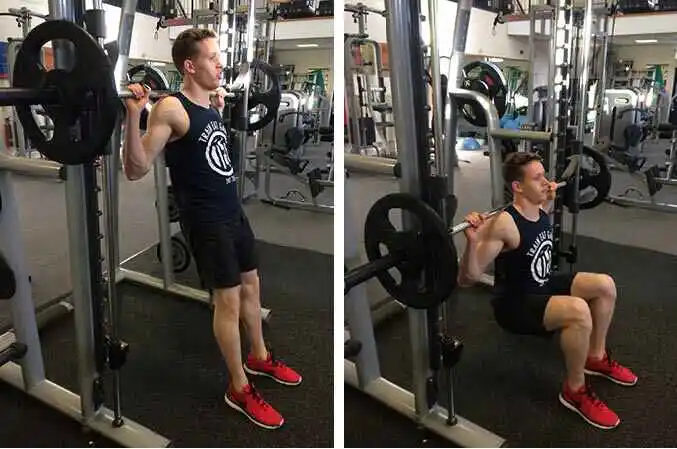
Reverse hack squat
- In the beginning, the shoulder pads’ height needs to be changed.
- They should be just low enough so you have to bend your knees significantly and drop down to chest height.
- Determine a weight that will test you sufficiently to perform multiple repetitions while maintaining proper form.
- The back pad should be in front of your chest as you face the machine.
- Place your feet near the base of the platform, leaving just enough room between them and the machine, so that your knees may bend easily.
- Keeping your feet shoulder-width apart, place the shoulder pads on your traps in a comfortable position.
- You can let go of the weight once you’re upright and your knees are fully extended.
- You may center your body by moving your feet on the platform.
- Test that the gap across your feet equals your shoulder width.
- To start lowering your body toward the platform, squat down and extend your knees and shins well beyond your toes.
- Lean back and let your hips drop.
- Make sure your back is not too hunched over.
- Allowing your butt to drop below your knees will cause your quadriceps to contract significantly.
- Hold for a brief while at the bottom of the movement, then slowly return your hips and knees to the starting position.
- At the peak of the exercise, keep your hips and knees slightly bent to maintain ongoing quad tension.
- Then relax.
- Continue for 8-10 repetitions.
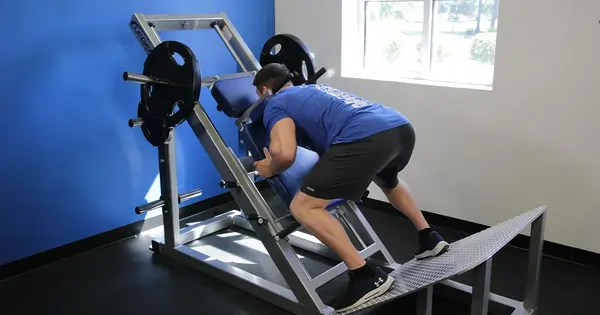
Narrow hack squat
- Perform this exercise with your back flat on the hack squat machine’s back pads, starting with your shoulders tucked under them.
- subsequently, maintain a very reduced posture with your toes indicating out and set up your legs less than shoulder-wide apart.
- Start lowering the machine while bending your knees after extending your legs without locking them.
- Keep doing this until your upper legs and knees form a 90-degree angle.
- Apply your heels to aid yourself up to your starting position.
- Then relax.
- Perform this exercise 8-10 repetitions.
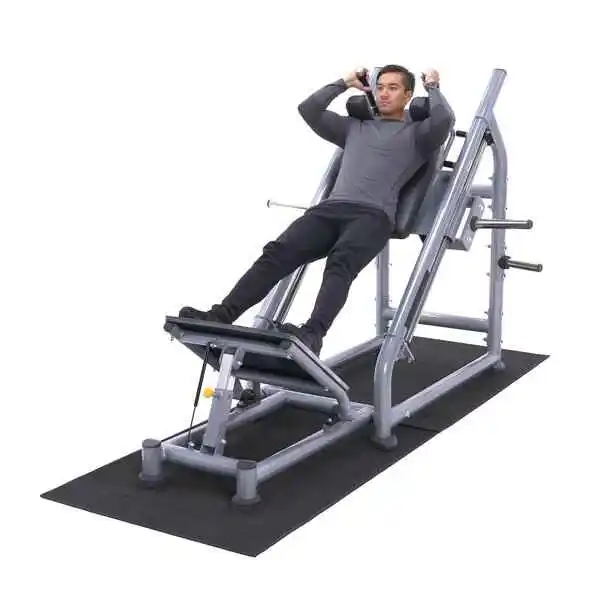
Belt Squat
- A cable connects a belt around the waist of a lifter.
- The belt then connects to a loading mechanism after going via numerous pulleys.
- There are additional belt squat machines that use a free-weight system with a belt and chain attached.
- As a consequence, the learner’s hands keep free and he can attempt any squat variation without risk of back pain.
- Make sure your shins are parallel to the floor when using the belt machine to complete hack squats.
- Then go back to your neutral position.
- Then relax.
- Perform this exercise 8-10 repetitions.
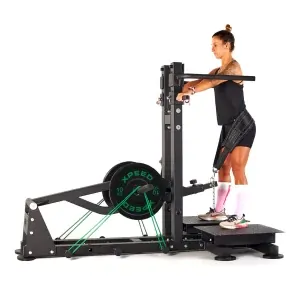
Plie Squat
- Put a dumbbell or kettlebell on the floor in a vertical position.
- Maintain an upright position where your arms are more expansive than shoulder width and stretch them perpendicular to the floor.
- Taking the dumbbell or kettlebell with both hands, squat down.
- Keep your abs taut and plant your feet firmly on the floor as you stand tall.
- Slowly return to the starting position.
- Then relax.
- Perform this exercise 8-10 repetitions.
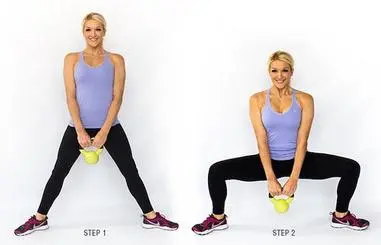
Heels Elevated Hack Squat
- A few weight plates or a squat wedge should be placed on the floor.
- Place your feet slightly wider than hip-width apart on the raised platform, so that just your heels are on it.
- It should be easy for you to grasp your toes.
- Take a deep inhalation, contract your core and quadriceps, and then reduce back carefully into a squat.
- Pause at the bottom of the movement.
- Contract your quadriceps when you stop at the top.
- Then relax.
- Perform this exercise 8-10 repetitions.
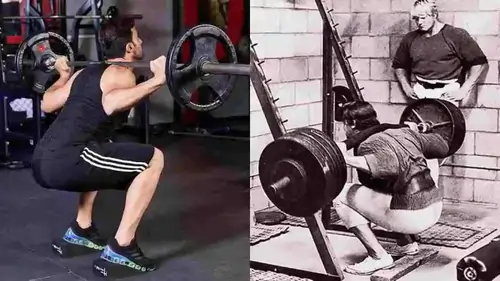
Barbell Hack Squat
- With a barbell at arm’s length ahead you and your feet shoulder-width apart, maintain an upright posture.
- Grasp the barbell with your palms facing back and your palms shoulder-wide apart.
- You can use wrist wraps to strengthen your grip during this exercise. Here’s where you’ll begin.
- Keep your head, eyes, and back straight as you squat until your upper thighs are parallel to the floor.
- As you slowly descend, take a breath.
- Raise yourself back up as you exhale, squeezing your thighs and mostly using your heel.
- Then relax.
- Perform this exercise 8-10 repetitions.
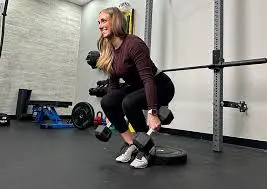
Ideas on how to train effectively and with safety in your thoughts:
It’s significant to completely warm up and expand before beginning hack squats. Warming up your muscles must be done to make them prepared for the action. Try doing mild cardiovascular exercises like jogging or cycling to increase blood flow to your muscles. Because they focus on the muscles used in hack squats, stretching exercises like leg swings, walking lunges, and hip rotations are also advantageous.
Modifying the Hack Squat Settings It’s crucial to modify a hack squat machine to fit your particular body measurements. For the best alignment and full range of motion, make sure the shoulder pad rests comfortably on your shoulders and upper back. The seat height may also be modified.
Does anyone have a reason for not taking part?
Everyone should be able to use a hack squat machine because it is so flexible. However, it’s a good idea to ask a trainer how to operate the machine for the first time because it’s a big piece of equipment and you need to learn how to release the handle carefully.
Ideally, when you are suffering from lumbar or ligament problems, you should avoid using the hack squat. Though the device aids in stability, the current issues may worsen because the joints will still be under stress.
Summary
Hack squats are an extremely efficient leg exercise that can help you improve the strength and power of your lower body. Hack squats are a good leg workout that has several benefits and can help you meet your fitness goals. The quadriceps, hamstrings, and glutes are the primary muscles that are applied with a joint workout called the hack squat.
They use a barbell or a hack squat machine to do the exercise, which makes the training more controlled and focused. Hack squats stimulate the quadriceps more than regular squats and provide a new, more powerful stimulus for leg growth.
A good workout for strengthening the muscles around your legs, specifically the quadriceps muscles, is the hack squat. You can also try a few modifications to gain even more benefits. any of your level of experience—powerlifting, bodybuilding, beginner lifting, or somewhere in between—hack squats are an effective exercise to incorporate into your routine.
FAQs
What does the Hack Squat mean?
A fundamental quad exercise that builds your quadriceps, thighs, and adductors is the machine hack squat. The hack squat is an amalgam of the press of the legs and the barbell squat. Identical to the front squat or even the squat, it uses a machine that is more solid than the leg press and promotes your quadriceps while requiring a balanced stance.
Should I continuously squat deeply?
When you practice through the joint’s maximum range of motion, you’ll usually get more overall advantages, such as improved strength, mobility, and muscle growth. Squat as low as you can at this stage if you aren’t physically able to go much deeper.
What Advantages Do Hack Squats Bring?
Hack squats are an excellent method to work and strengthen your leg muscles, such as your quadriceps, glutes, and adductors. Through its stability and constant plane of action, you can focus on using the muscles instead of worrying about your balance. If you have trouble performing standard squats or have difficulties with balance or mobility, the hack squat could be a helpful substitute.
How are correct hack squats performed?
A hack squat strengthens the entire lower body, including the core and the calves, quadriceps, hamstrings, and glutes. Your front legs will be affected later if you concentrate on your quadriceps.
References
- Davis, N. (2020, January 8). How to do a hack squat the right way. Healthline. https://www.healthline.com/health/fitness-exercise/hack-squat
- Machine Hack squat. (2021, May 7). [Video]. Muscle & Strength. https://www.muscleandstrength.com/exercises/hack-squat.html
- Falk, M., & Del Turco, L. (2024, September 9). How to do a hack squat to build Serious Lower-Body Strength. Shape. https://www.shape.com/fitness/tips/how-do-hack-squats-machine
- Covello, C. (2024, June 5). How to Hack Squat: Dial in your technique | Garage Gym reviews. Garage Gym Reviews. https://www.garagegymreviews.com/hack-squat
- StrengthLog. (2023, January 26). How to do Hack Squats: Muscles worked & Benefits – StrengthLog. https://www.strengthlog.com/hack-squat-machine/#:~:text=The%20hack%20squat%20is%20an,focus%20on%20the%20muscles%20worked.
- Kirkup-Lee, A. (2024, October 24). Your ultimate guide to hack squats, plus the best variations. Gymshark. https://row.gymshark.com/blog/article/the-ultimate-guide-to-hack-squats

